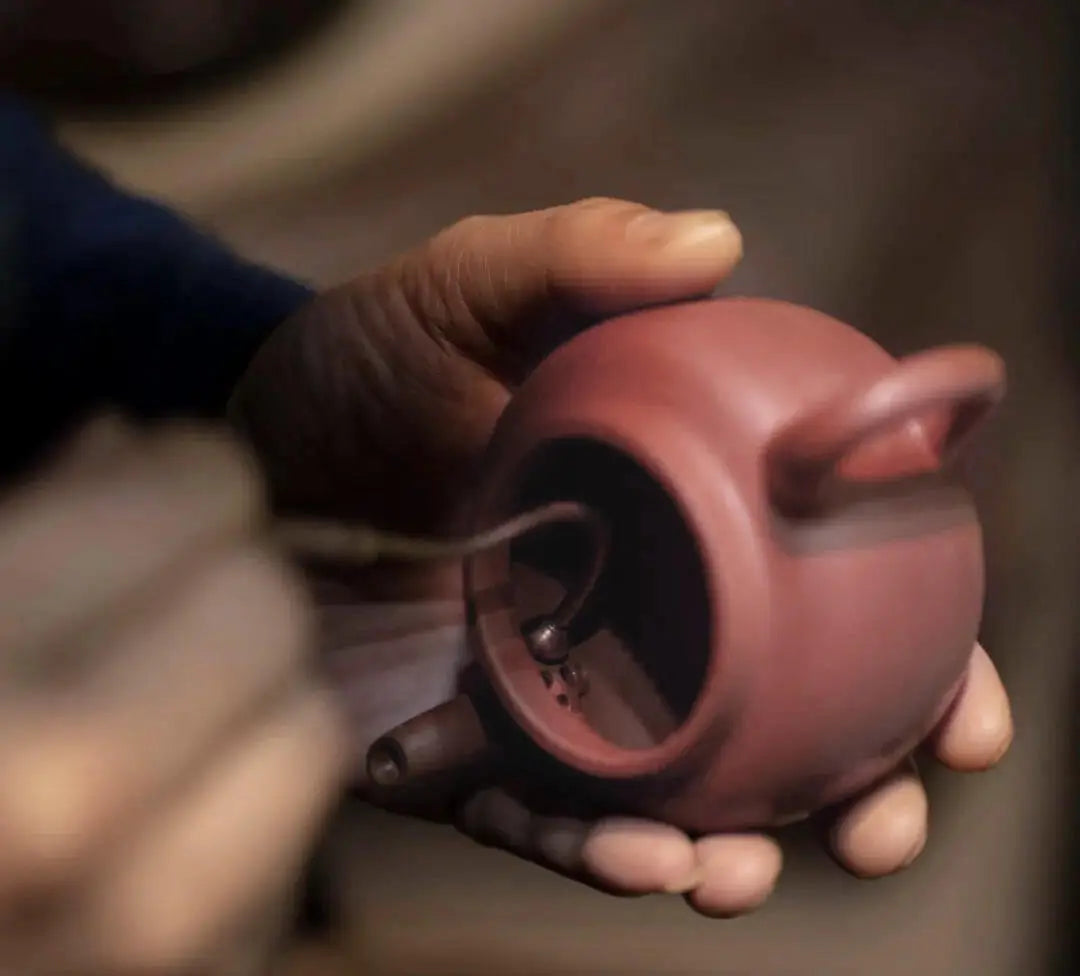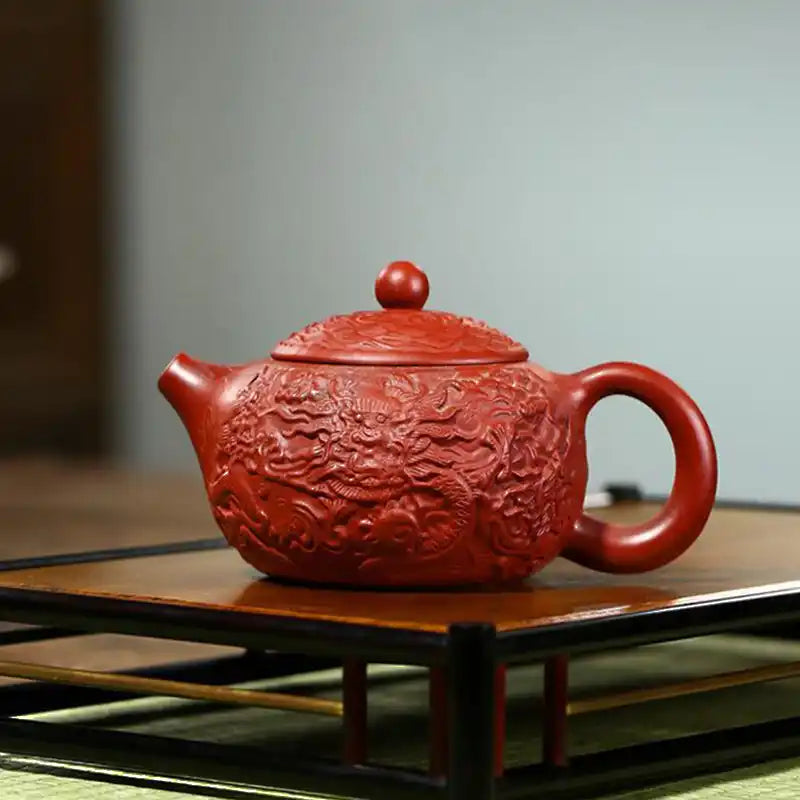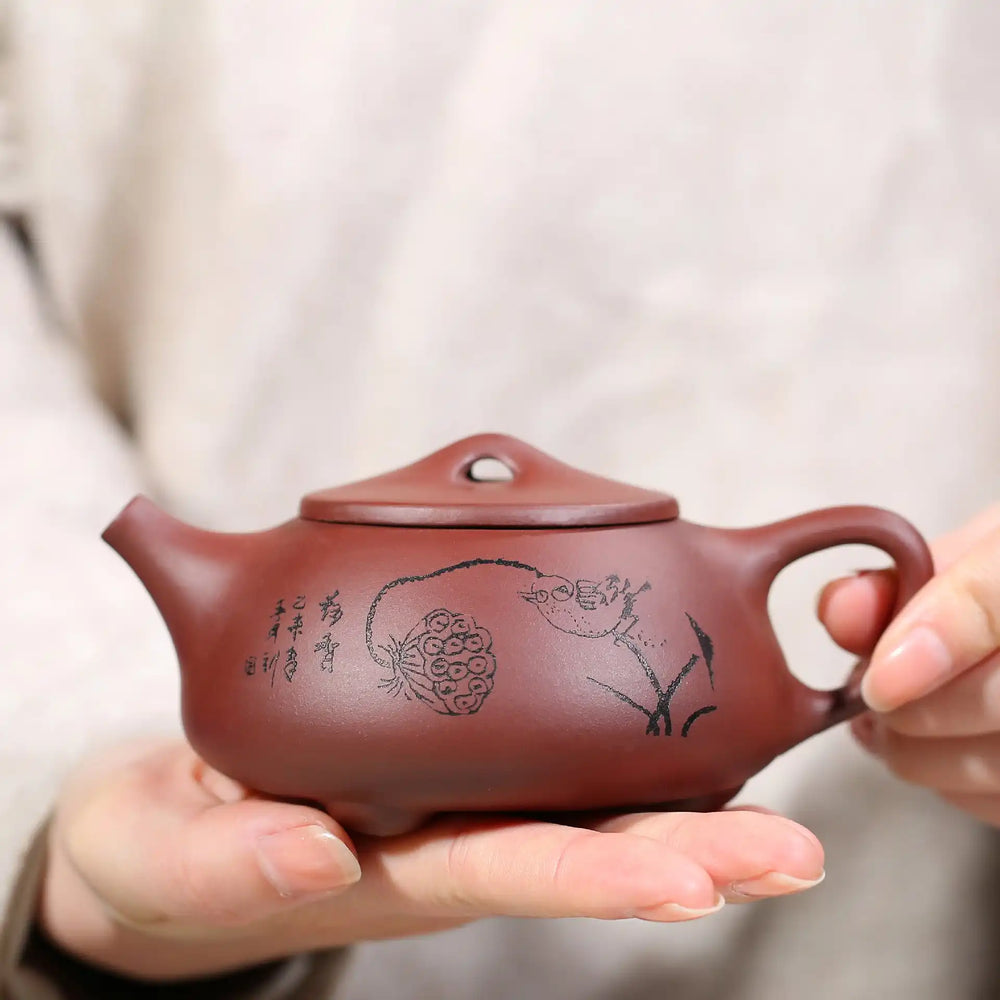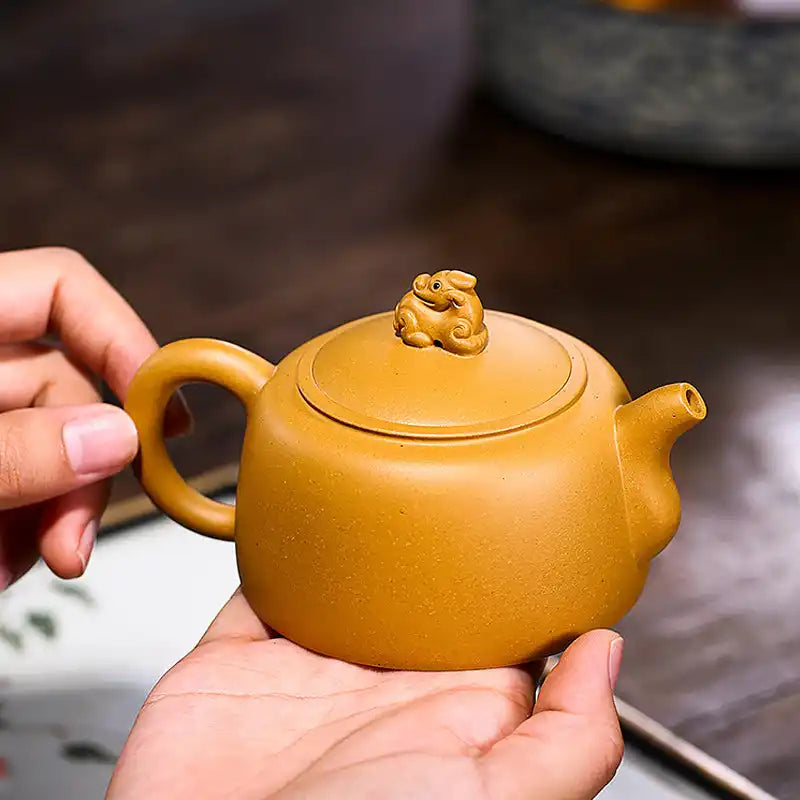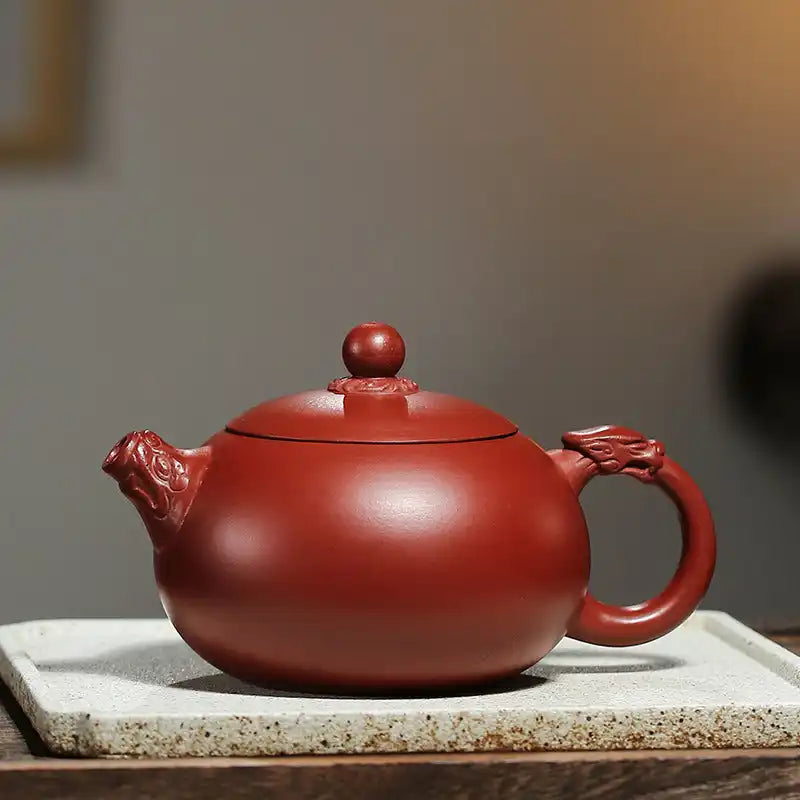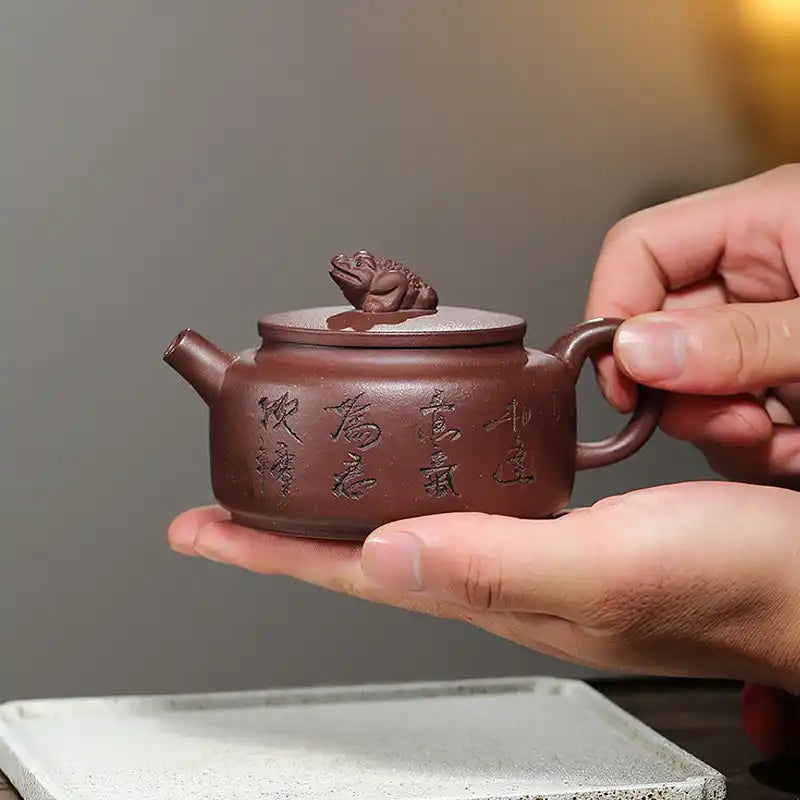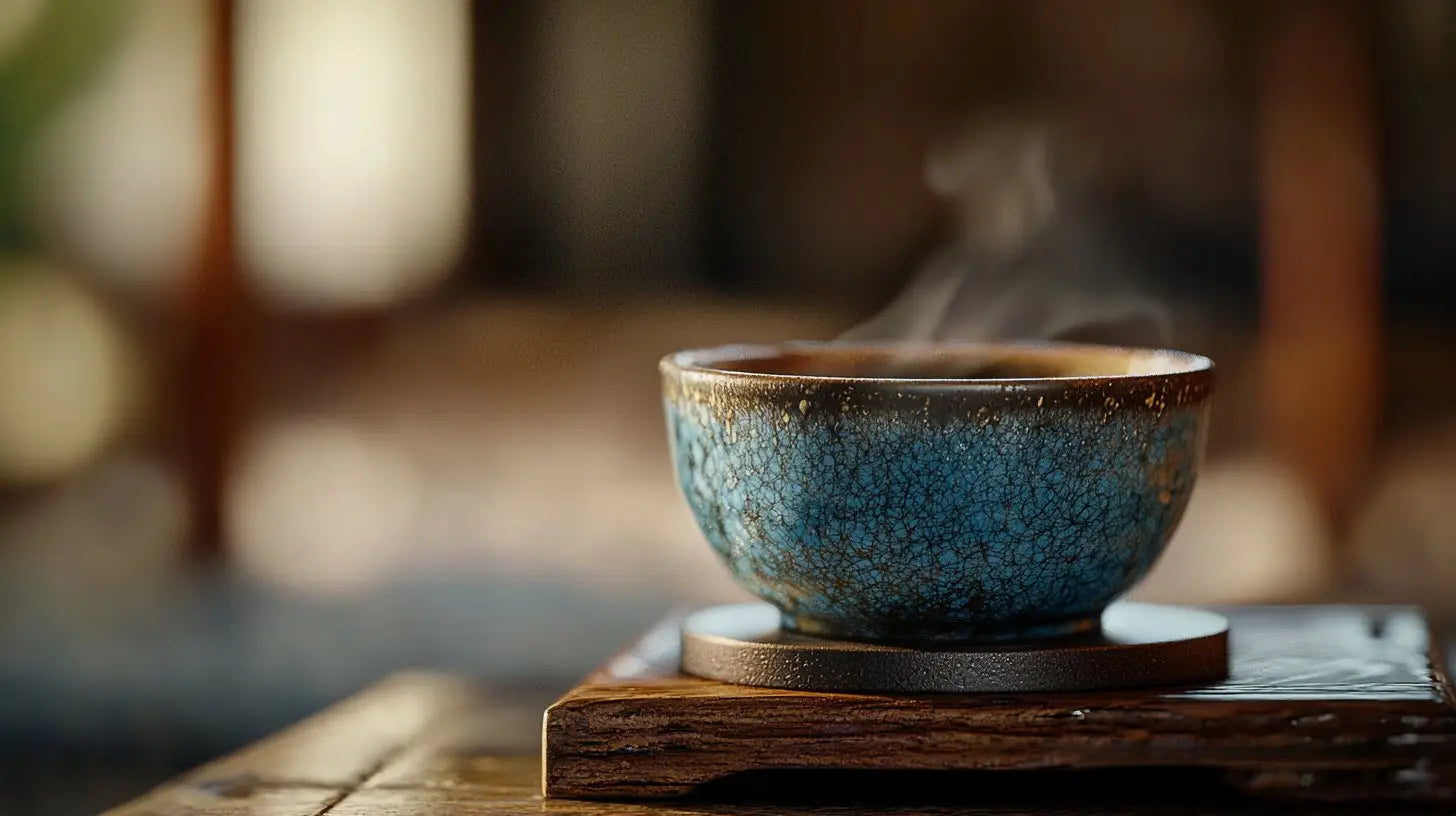As a tea expert with over 15 years of experience in Chinese tea brewing, I’ve learned that choosing the right Yixing teapot can elevate your tea experience to a whole new level. Yixing teapots (pronounced “ee-shing”), made from the famous zisha clay of Yixing, China, have a legendary status among tea connoisseurs. In this guide, I’ll share my personal insights and professional tips on how to select a Yixing teapot that suits your needs and brings out the best in your tea. Whether you’re in the US, UK, or Canada, this first-hand advice will help you make an informed choice with confidence.
What Makes Yixing Teapots Special?
Before diving into the selection process, it’s important to understand why Yixing teapots are so revered. These teapots are crafted from a unique clay called Zisha (meaning “purple sand” clay) that is only found in the Yixing region of China. Unlike porcelain or glass teapots, Yixing clay teapots are unglazed and slightly porous. This means the teapot absorbs a tiny bit of tea with each brew, developing a seasoned patina over time that enriches the flavor of future infusions. I remember the first time I brewed Wuyi oolong in my Yixing pot – by the tenth brew, the pot itself had taken on a gentle tea aroma, subtly enhancing each subsequent cup.
Another special feature is heat retention. Yixing clay holds heat exceptionally well, providing a stable temperature for steeping oolong, Pu-erh, and black teas. The combination of heat retention and gradual flavor absorption means that a good Yixing teapot, with proper use, actually improves the taste and mouthfeel of your tea over time. It’s like having a trusted brewing companion that grows with you on your tea journey.
Different Yixing Clay Types and Their Influence

Yixing teapots come in a few distinct clay types, each with its own properties. Over the years, I’ve collected various clay teapots and noticed how each clay can subtly change the brew. Here are the primary Yixing clay types you’ll encounter and how they may affect your tea:
Zi Ni (Purple Clay)
Zi Ni is the classic “purple sand” clay – usually a dark brown or purplish-brown color. It’s the most common Yixing clay and is known for its relatively high porosity. In practice, a Zi Ni teapot tends to soften harsh notes and round out the flavors of tea. I find that Zi Ni is a great all-purpose clay, excellent for darker, robust teas. For example, if you love earthy ripe Pu-erh or roasted oolong (like Wuyi rock tea), a Zi Ni teapot can mellow any bitterness and make the flavors more harmonious. It’s often my go-to clay type when I’m unsure which teapot to use, because it performs well with a variety of teas that have deeper flavor profiles.
Hong Ni / Zhu Ni (Red Clay)
Red clay Yixing teapots can actually refer to a couple of sub-types. Hong Ni generally means red clay, and Zhu Ni (sometimes spelled “Zhu Sha”) is a famous type of red clay that has a bright cinnabar color. These clays have a higher iron content and are fired at slightly higher temperatures, resulting in a somewhat less porous teapot compared to Zi Ni. Hong Ni and especially Zhu Ni teapots are prized for their ability to enhance aromatic and lively notes in tea. In my experience, a well-made Zhu Ni teapot holds heat extremely well and can really amplify the floral and fruity fragrances of teas. I often reserve my red clay pots for teas like high-mountain oolongs, Dan Cong (single-origin Phoenix oolongs), or even black teas with sweet, fragrant profiles. When you brew a delicate oolong in a Zhu Ni pot, the aroma can be incredible – the clay’s heat retention brings out those orchid and honey notes beautifully.
Duan Ni (Golden/Yellow Clay)
Duan Ni is sometimes called “stone clay” and often has a sandy beige, yellow, or light golden hue. This clay type is typically blended with various minerals, giving it unique colors (you might see light greenish or bluish tints in some Duan Ni pots) and a somewhat coarser texture. Duan Ni has moderate porosity and good heat retention. I find Duan Ni teapots are wonderful for smoothing out very bright or sharp flavors. For instance, lightly oxidized oolongs or young raw Pu-erh teas that have a bit of sharpness can brew more gently in a Duan Ni pot. The clay has a mellowing effect, rounding out the flavor while preserving sweetness. One of my favorite Duan Ni teapots has a pale golden color, and I dedicate it to a jade oolong – the result is a mellow, buttery brew every time.
While the above three are the most common clay categories, you might occasionally hear about other rare clays (like Lü Ni, a greenish-hued clay, or Hei Ni, a darker clay). As a beginner or even intermediate tea enthusiast, focusing on Zi Ni, Hong Ni/Zhu Ni, or Duan Ni will cover 99% of what you need. Each authentic Yixing clay teapot will gradually develop a richer color and sheen the more you use it, reflecting the teas it has brewed – a beautiful aspect of owning one.
Craftsmanship: Handmade vs. Mass-Produced

The next big factor in choosing a Yixing teapot is the quality of craftsmanship. Yixing teapots range from inexpensive factory-made pieces to priceless works of art by renowned masters. As someone who has handled everything from basic $30 pots to studio-grade artisan teapots, I can tell you that craftsmanship affects both aesthetics and functionality.
Handmade vs. Half-Hand vs. Machine-Made: Traditional Yixing teapots are often handmade by skilled artisans using simple tools and lots of experience. A fully handmade teapot (quan shou gong) will have subtle irregularities and a certain character – it might not be 100% perfectly symmetrical, but it carries the mark of the artist. Half-handmade teapots are made with the aid of molds for the basic shape, then finished by hand; these can be quite high quality if done by a good craftsman. Machine-made or mass-produced teapots (sometimes called “mold made”) tend to be cheaper, often very uniform in shape, and lack that personal touch. For a newcomer, a well-made half-handmade teapot from a reputable workshop can offer a great balance of quality and price. You don’t necessarily need to spend a fortune on a fully handmade teapot to get good results, but you do want something crafted with care.
Signs of a Quality Teapot: When evaluating Yixing teapot quality, here are some things I look for:
- Lid Fit and Air-Tightness: The lid should sit snugly with minimal wobbles. A quick test I do is fill the pot with water, place the lid on, and pour while covering the little vent hole on the lid with a finger – a well-fitted lid will slow or stop the pour due to vacuum pressure. This indicates good engineering and fit.
- Pouring Performance: Observe the stream of water when you pour. A quality teapot will have a smooth, steady pour with no drips, and it should empty reasonably fast. Quick draining (often under 10 seconds for a small pot) is useful so your tea doesn’t over-steep as you pour out every drop. Some of my favorite pots have a beautiful, thin straight stream and can empty in about 6-8 seconds.
- Clay Texture and Finish: Authentic Yixing clay has a distinct feel – slightly grainy or sandy to the touch when you run your fingers on the unglazed surface. You might see tiny speckles or subtle “imperfections” like small bumps or pits; these are actually a good sign, indicating real mineral content and traditional firing. If a pot’s surface looks overly smooth, glossy, or has a chemical smell, it could be suspect (perhaps treated or not real Yixing clay).
- Sound Test: Here’s a tip from one of my early mentors: take the lid and gently tap it against the rim of the pot – a clear, high-pitched ringing tone can indicate the pot was fired at a high temperature (which generally means a sturdier, less porous clay). A dull sound might mean lower firing (more porous clay). Both have their uses, but very high pitch might approach porcelain-like density (less flavor absorption), whereas very low pitch could mean a fragile or overly porous pot. Ideally, a nice medium ring implies a balanced clay suitable for brewing.
Finally, consider the maker’s reputation. If you’re investing in a higher-end Yixing, it’s wise to seek out known artists or studios. An established artisan often has access to better raw clay and has refined skills – which means their teapots not only look beautiful but also brew tea wonderfully. However, for starting out, there are many affordable Yixing teapots from reputable vendors that are perfectly adequate. The key is to avoid extremely cheap knock-offs. If a deal seems too good to be true (e.g., a “100% pure Yixing handmade teapot” for $20), it likely isn’t genuine. When in doubt, buy from trusted tea shops or sources like our own curated Yixing teapot collection where authenticity and quality are guaranteed.
Choosing the Right Shape and Size

Yixing teapots come in a delightful variety of shapes and sizes, from the classic round Xi Shi shape to tall elegant forms like the Dragon Egg or flat wide shapes like the Pan Hu. You might be wondering, beyond aesthetics, does the shape or size of a teapot really matter? In my experience, yes – shape and size can subtly influence brewing, and they certainly influence practicality for your needs.
Size: Brewing for One or Many
Most Yixing pots are relatively small by Western standards. They typically range from about 70 ml (tiny, one-person size) up to 200 ml or so (which can serve several small cups in a Gongfu session). I usually recommend something around 120–180 ml as a versatile starter size. A 150 ml pot, for example, is perfect for 1-3 people doing Gongfu style brewing, allowing multiple infusions without wasting tea. If you mostly brew alone, you might even enjoy a smaller 100 ml pot to savor concentrated brews. On the other hand, if you plan to host tea sessions or serve a group, a larger 200+ ml teapot might be handy – though Yixing pots above 250 ml are less common because they start to lose heat retention efficiency if too large.
Remember, a smaller pot allows you to control infusion time and flavor intensity more precisely. I have a tiny 90 ml pot dedicated to a very high-end oolong; it forces me to brew in small volumes, which yields an incredibly rich cup and lets me stretch the number of infusions. But for daily use with friends, my 160 ml Zi Ni pot is a workhorse that I constantly reach for.
Shape: Form Meets Function
The shape of a Yixing teapot isn’t just about beauty – it can affect how tea leaves interact with water inside the pot. Here are a few considerations on shape:
- Round, Pear-Shaped, or Globular Pots: Shapes like the classic Xi Shi (round) or Shui Ping (a squat, globe-like pot) provide a nice even space for leaves to unfurl. I find these shapes are great for tightly rolled teas, such as ball-rolled oolongs like Tie Guan Yin, because the leaves have room to open gradually and evenly.
- Tall, Narrow Pots: Some teapots have a more cylindrical or tall profile. These can be beneficial for long, strip-style tea leaves (like certain Wuyi rock oolongs, Dan Cong oolongs, or black teas like Dian Hong). The vertical space allows lengthy leaves to expand without clogging the spout as easily. I use a tall, slender Yixing pot for my Phoenix Dan Cong; its shape complements those long, twisted leaves perfectly.
- Flat, Wide Pots: There are flatter shapes (imagine a low-profile pot with a wide body). These tend to cool a bit faster due to a larger surface area. I reserve flatter pots for more delicate teas that I brew at slightly lower temperatures or that I don’t mind cooling quickly – for example, a white tea or a young sheng Pu-erh that I want to keep from overheating. The cooler brewing environment can preserve the high notes of those teas. Keep in mind, thin-walled flat pots will cool faster than thick-walled ones.
- Spout and Handle Design: Not exactly “shape” of the body, but pay attention to the spout style (some Yixing pots have a single hole filter, others have a multi-hole filter) and handle ergonomics. If you prefer fast pours, a pot with a larger spout or multiple holes might drain quicker. Also, ensure the handle feels comfortable and balanced in your hand. The teapot should pour without you having to contort your wrist, and a well-designed spout will pour cleanly without dribbling.
Ultimately, choose a shape that you find aesthetically pleasing and that suits the tea you brew most often. Many tea lovers eventually collect different shapes for different teas – that’s part of the fun! But for your first or primary Yixing teapot, a classic shape like a round or slightly pear-shaped pot is a safe, versatile choice that can handle a variety of teas well.
Pairing Teapots with Tea Types
Now comes the important question: which tea are you going to brew in your Yixing teapot? One of the golden rules of Yixing use is to dedicate each teapot to one type of tea (or at least one flavor family). This is because the porous clay will absorb and retain the essence of that tea, and you typically don’t want to mix flavor profiles. Here’s some guidance on matching tea types with the right teapot:
- Oolong Teas: Yixing teapots and oolong teas are a match made in heaven. If you primarily drink oolong, consider the subtype. For dark, roasted oolongs like Wuyi rock tea or heavily roasted Tie Guan Yin, a Zi Ni (purple clay) pot works wonderfully to smooth out roasty edges and deepen the body. For light, floral oolongs like green Tie Guan Yin or high mountain Ali Shan oolong, a Hong Ni/Zhu Ni (red clay) pot can amplify those gardenia and orchid notes. For medium-oxidized, fruity oolongs like Phoenix Dan Cong, you might use either red clay or even Duan Ni for a mellowing touch. Oolongs often involve multiple infusions, so the heat retention of Yixing really shines here.
- Pu-erh Tea: Pu-erh comes in two forms – ripe (shou) and raw (sheng). Ripe Pu-erh, with its earthy, rich flavor, is excellent in a Zi Ni pot; the clay’s porosity tames any roughness and rounds out the flavor. I’ve dedicated an old Zi Ni teapot just to my shou Pu-erhs, and it has developed a deep, dark interior seasoning that seems to make each brew smoother than the last. For raw Pu-erh, especially aged sheng, Zi Ni or Duan Ni both work well. Young sheng Pu-erh (which can be a bit sharp or bitter) might benefit from Duan Ni to soften its edges. Either way, Yixing pots bring out the complexity in Pu-erh beautifully. Just be sure not to mix your ripe and raw Pu-erh in the same pot – their flavor profiles are different enough that you’ll want separate teapots if possible.
- Black Tea (Hong Cha): Chinese black teas like Dian Hong (Yunnan red) or Lapsang Souchong also do well in Yixing. Red clay teapots are often recommended for black teas because they hold heat and heighten sweetness and aroma. I use a Zhu Ni pot for a malty Golden Monkey black tea – the result is a remarkably rich and smooth brew with enhanced sweet notes. Zi Ni clay can also work nicely for black teas if you only have one pot; it will make the tea very full-bodied and rounded.
- Green, White, or Herbal Teas: Traditionally, it’s advised not to use Yixing clay for very delicate teas like green or white tea. The high heat retention can overcook these teas, and the porous clay might overshadow their subtle flavors. Personally, I brew greens and whites in porcelain or glass vessels to get the purest taste. If you really want to use Yixing for a lighter tea, choose a small, thin-walled pot and be mindful of water temperature. And if you enjoy herbal or scented teas (like jasmine), be aware that their strong flavors can linger in the clay – you might decide to dedicate one older pot just for that purpose or, again, use a neutral material teapot instead.
In summary, think about the tea you drink most often and choose a teapot that matches that tea’s personality. If you’re unsure, start with a medium-sized Zi Ni teapot – it’s the most versatile and forgiving choice. You can then expand your collection with more specialized clays or shapes as you delve deeper into the world of tea.
Building a Connection with Your Teapot
Once you’ve chosen your Yixing teapot, you’re not just acquiring a brewing tool – you’re beginning a relationship. In my years of tea practice, I’ve found that a teapot almost becomes an extension of the tea lover. There’s a little ritual involved: first, you’ll want to season your new Yixing teapot by boiling it in water (some people add a handful of tea leaves to the water as well) to cleanse any clay dust and “open up” the pores. This simple act not only readies the pot for brewing but also marks the start of its journey with you.
With each brewing session, your teapot will absorb the essence of your tea. Over months and years, if you take good care of it – rinsing only with water, gently wiping it, and never using soap – the teapot will develop a lustrous sheen and a rich inner coating of tea oils. We often say a well-loved Yixing pot eventually can brew a cup just by adding hot water! While that’s a bit of an exaggeration, it speaks to the deep connection between clay and tea.
Don’t be afraid to experiment and let your experience guide you. As a tea expert, I can give recommendations, but ultimately you might discover that a certain teapot just “sings” with a particular tea in a way that defies the usual rules. That exploration is part of the joy of Gongfu tea. Remember, the right teapot for you is one that inspires you to brew – one that you find yourself reaching for because you love how it feels, how it pours, and how it enhances your tea moments.
Final Thoughts
Choosing the right Yixing teapot is a personal and rewarding journey. By considering the clay type, craftsmanship, shape, and matching it to your favorite teas, you’ll find a teapot that becomes a cherished partner in your daily ritual. Over time, as you and your Yixing teapot age together, you’ll appreciate not just the delicious cups of tea, but also the intangible qualities of patience, care, and tradition it brings to your life. I still remember buying my first Yixing pot 15 years ago – today it is darkened and glossy from countless brews, and it’s one of my most treasured tea companions.
If you’re ready to find that special teapot, feel free to explore our curated selection of authentic Yixing teapots or reach out to me with any questions. Here’s to many flavorful cups ahead, brewed with the perfect teapot!
Written by XINZE JIANG, Senior Expert of China Tea Industry Circulation Association, with 15 years of experience.
